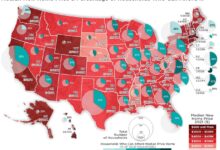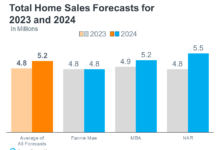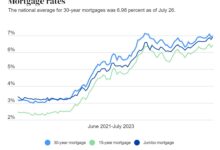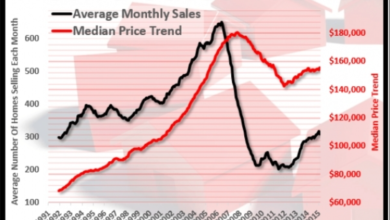Home Sales Prices
Understanding Home Sales Prices
In the intricate realm of real estate, home sales prices stand as a key indicator, reflecting the dynamic interplay of market forces, property features, and economic conditions. Whether you’re a potential buyer evaluating affordability or a seller strategically pricing a property, comprehending the factors that influence home sales prices is essential for making informed decisions. This article delves into the nuances of home sales prices, shedding light on the variables that contribute to their fluctuations and the strategies that can be employed to navigate this critical aspect of property transactions.
1. Unraveling the Factors: Influences on Home Sales Prices
1.1 Market Demand and Supply Dynamics
One of the fundamental factors that shape home sales prices is the dynamic relationship between market demand and supply. In a seller’s market, characterized by high demand and limited inventory, prices tend to rise as buyers compete for available properties. Conversely, in a buyer’s market with ample inventory and reduced demand, prices may stabilize or experience moderate declines. Understanding the prevailing market conditions is crucial for both buyers and sellers, as it sets the tone for negotiating and strategizing around home sales prices. Additionally, regional variations and micro-market dynamics contribute to the complexity of this interplay, necessitating a nuanced approach to pricing strategies.
1.2 Property Features and Condition
The inherent features and condition of a property play a pivotal role in determining its market value and, consequently, its sales price. Factors such as the size of the property, the number of bedrooms and bathrooms, the quality of construction, and the presence of desirable amenities can significantly influence pricing. Renovations, modern upgrades, and well-maintained homes often command higher prices, reflecting the added value they bring to potential buyers. Sellers should carefully assess and highlight the unique features of their properties, while buyers should consider the long-term benefits and potential costs associated with the condition of a home when evaluating sales prices.
2. Strategic Pricing: Navigating the Path to Optimal Home Sales Prices
2.1 Comparative Market Analysis (CMA) and Pricing Accuracy
Heading into the realm of strategic pricing, Comparative Market Analysis (CMA) stands as a crucial tool for both sellers and buyers. A CMA involves an in-depth assessment of recently sold properties, currently listed properties, and properties that were taken off the market without selling. By analyzing these comparable properties, sellers can gain insights into the prevailing market conditions and strategically set their home sales prices. For buyers, a CMA offers a benchmark for evaluating the fairness of a property’s price and provides valuable information for negotiation. Ensuring pricing accuracy based on a well-researched CMA is fundamental for a successful and transparent transaction.
2.2 Pricing Strategies for Sellers in a Competitive Market
Sellers navigating a competitive market must employ effective pricing strategies to attract potential buyers without compromising the property’s value. While aiming for a price that aligns with market trends, sellers may strategically set the initial list price slightly below the perceived market value to generate interest and multiple offers. This approach, known as underpricing, can create a sense of urgency among buyers and potentially lead to bidding wars. Alternatively, in a market where inventory exceeds demand, a strategic pricing approach may involve pricing a property competitively to stand out among comparable listings. Sellers must carefully assess the market dynamics and work in tandem with experienced real estate professionals to determine the most effective pricing strategy for their specific circumstances.
2.3 Negotiation Tactics for Buyers in a Buyer’s Market
For buyers navigating a buyer’s market, where inventory is ample and negotiating power is more pronounced, strategic pricing involves a different set of considerations. Buyers may explore properties listed slightly above their budget, anticipating room for negotiation. Additionally, in a market with stagnant or decreasing prices, understanding the seller’s motivation and the property’s time on the market can inform negotiation tactics. Buyers can leverage this information to submit offers below the listed price or negotiate additional concessions, ensuring that they secure a property at the most favorable terms possible. However, it’s crucial for buyers to balance negotiation strategies with a realistic assessment of a property’s value and market conditions.
In conclusion, the world of home sales prices is multifaceted, shaped by market dynamics, property features, and strategic pricing approaches. Whether you’re a buyer seeking a fair deal or a seller aiming for optimal returns, a nuanced understanding of the factors influencing home sales prices empowers you to navigate the real estate landscape with confidence. By incorporating comprehensive market analysis and strategic pricing strategies, both buyers and sellers can contribute to the successful outcome of property transactions, ensuring that home sales prices align with market realities and stakeholder objectives.









